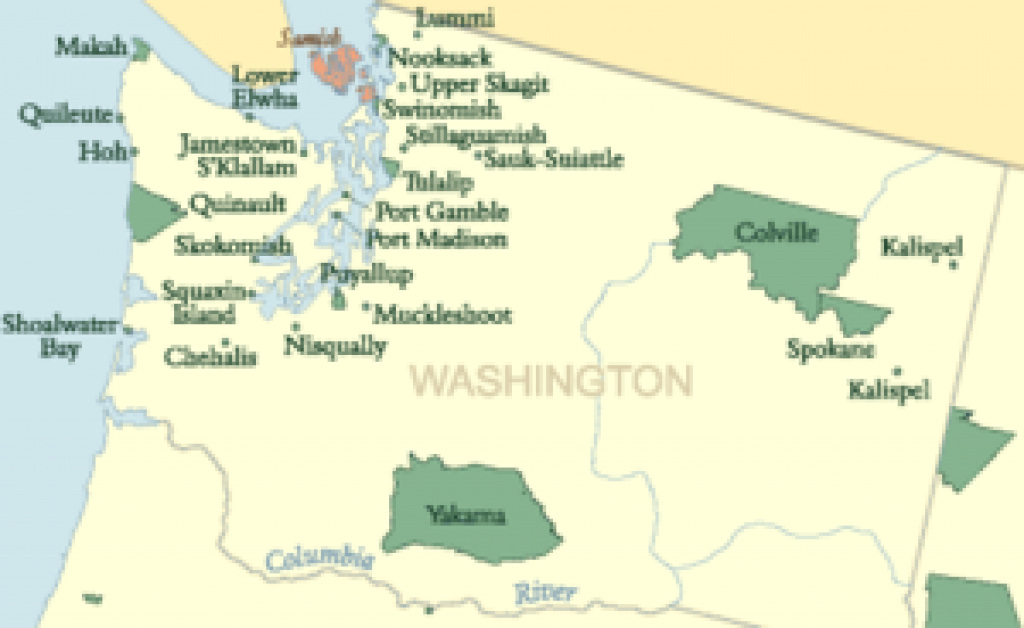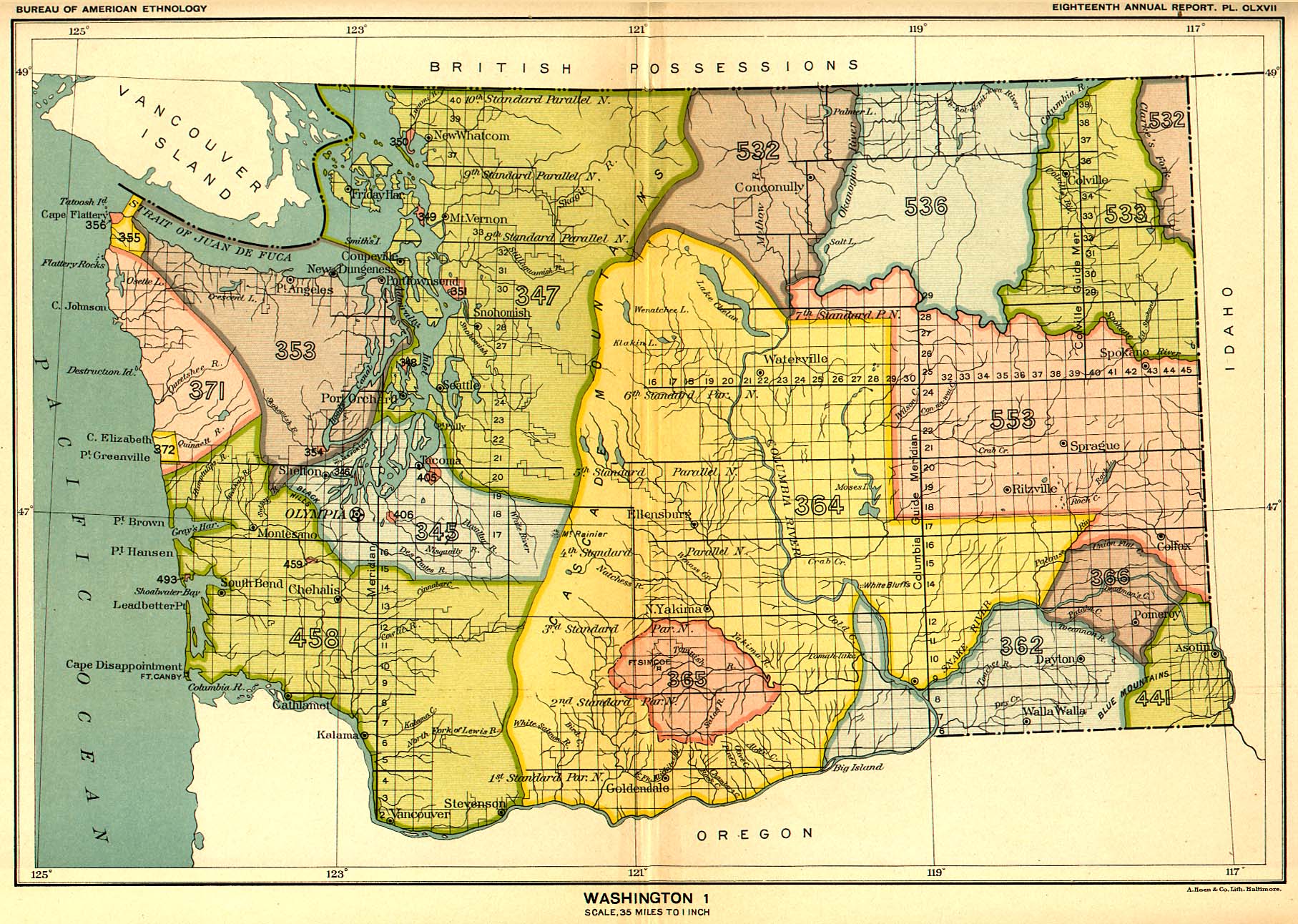Washington State: Where Tribal Lands Flourish
Washington State: Where Tribal Lands Flourish

The Evergreen State, with its majestic mountains, lush forests, and sparkling waters, is also home to a rich and vibrant Native American heritage. Washington boasts 29 federally recognized tribes, each with its own unique history, culture, and traditions. But understanding the geography of these tribal lands can be a bit of a puzzle, especially for those new to the state. That’s where an Indian Reservations Washington Map comes in handy.
Navigating the Map: A Visual Journey Through Tribal Lands
Related Articles: Washington State: Where Tribal Lands Flourish
- Unveiling Native American Reservations: Discoveries and Insights
- Where In The World Are They? Mapping The American Indian Reservations
- Unveiling Native Colorado: Discoveries in "Indian Reservation" Explorations
- Uncover the World of Indian Reservations: Unveiling Past, Present, and Future on Our Interactive Map
- Uncover the Enigmatic World of Texas Panhandle Native American Tribes
An Indian Reservations Washington Map is more than just a collection of lines and names on a piece of paper. It’s a window into the heart of Washington’s indigenous history. It allows you to:
- Visualize the scope of tribal lands: The map paints a picture of the vastness and diversity of these territories, showcasing the interconnectedness of these communities with the land.
- Learn the names of the tribes: Each reservation is named after the specific tribe that resides there. This is a great starting point for learning about the unique history and culture of each tribe.
- Discover the location of tribal resources: Many reservations offer cultural centers, museums, casinos, and other attractions that provide opportunities for learning and engagement.
- Gain a deeper appreciation for Native American contributions: Understanding the geographic footprint of tribal lands helps us recognize the enduring impact of Native Americans on the state’s history, culture, and economy.
Finding the Right Map: A Guide to Your Options

You can find a variety of Indian Reservations Washington Maps online and in print. Here’s a breakdown of some popular options:
- Official Government Maps: The Bureau of Indian Affairs (BIA) offers detailed maps that provide information about reservation boundaries, tribal government offices, and other resources.
- State-Specific Maps: Organizations like the Washington State Department of Commerce and the Washington Indian Gaming Association produce maps that highlight tribal lands and gaming locations.
- Interactive Online Maps: Websites like Native-Land.ca and the Washington State Tribal Directory provide interactive maps that allow you to zoom in, explore specific reservations, and even access links to tribal websites.
- Educational Maps: Museums, schools, and cultural organizations often create maps that focus on specific aspects of tribal history, culture, or language.

Beyond the Map: Engaging with Tribal Communities
While a map is a great starting point, it’s just the beginning of your journey. To truly understand the rich tapestry of Native American culture in Washington, consider these opportunities:
- Visiting Tribal Museums: Immerse yourself in the history, art, and culture of individual tribes by visiting museums like the Burke Museum in Seattle, the Suquamish Museum, or the Tulalip Tribes Cultural Center.
- Attending Tribal Events: Many tribes host powwows, festivals, and other events that showcase their traditions and provide a chance to connect with tribal members.
- Supporting Tribal Businesses: Many reservations have thriving economies, and supporting their businesses is a great way to contribute to their well-being.
- Learning about Tribal History: Read books, watch documentaries, and listen to stories shared by tribal elders to gain a deeper understanding of the rich history and resilience of Native American communities in Washington.

Respectful Exploration: A Guide to Responsible Engagement
When exploring tribal lands and engaging with tribal communities, it’s important to remember that you are visiting sacred spaces. Here are some tips for respectful exploration:
- Ask for Permission: Before entering a reservation, it’s always a good idea to check with the tribe’s website or contact their government office to see if there are any specific rules or guidelines for visitors.
- Be Mindful of Cultural Sensitivity: Avoid taking photos of people without their permission, and be respectful of cultural traditions and ceremonies.
- Learn About Tribal Laws: Reservations have their own laws and regulations, so it’s important to be aware of them and follow them.
- Support Tribal Initiatives: If you’re interested in learning more about the tribe or contributing to their well-being, look for opportunities to volunteer or donate to their programs.
Washington’s Tribal Lands: A Tapestry of Diversity
Each of Washington’s 29 federally recognized tribes has a unique story to tell. Here’s a glimpse into the diversity of these communities:
- The Coast Salish Tribes: These tribes, including the Suquamish, Duwamish, and Snoqualmie, have a long history of fishing, hunting, and gathering along the state’s coastline.
- The Plateau Tribes: These tribes, including the Yakama, Colville, and Spokane, are known for their connection to the Columbia River and its tributaries, where they have practiced fishing, hunting, and agriculture for centuries.
- The Interior Salish Tribes: These tribes, including the Coeur d’Alene, Kalispel, and Pend Oreille, have a strong connection to the mountains and forests of eastern Washington.
Understanding the Past, Shaping the Future
An Indian Reservations Washington Map is a powerful tool for understanding the history and present-day reality of Native American communities in the state. It serves as a reminder of the enduring connection between these tribes and the land, and it provides a framework for fostering respect and understanding between all communities.
By engaging with tribal communities, supporting their initiatives, and learning about their rich culture and history, we can work together to create a brighter future for all.
FAQ: Indian Reservations Washington Map
Q: Where can I find a detailed map of all Indian reservations in Washington state?
A: You can find detailed maps online through the Bureau of Indian Affairs (BIA) website, the Washington State Department of Commerce, and Native-Land.ca. Many tribal websites also offer maps of their respective reservations.
Q: What information is typically included on an Indian Reservations Washington Map?
A: Indian Reservations Washington Maps typically include information about reservation boundaries, tribal government offices, major roads, and other points of interest. Some maps may also include information about tribal history, culture, and language.
Q: Are there any interactive maps available online?
A: Yes, there are several interactive maps available online, including those on the websites of Native-Land.ca and the Washington State Tribal Directory. These maps allow you to zoom in, explore specific reservations, and access links to tribal websites.
Q: What are some of the best resources for learning about the history and culture of Washington’s tribes?
A: There are many resources available for learning about the history and culture of Washington’s tribes. Some good starting points include tribal museums, cultural centers, books, documentaries, and websites. You can also connect with tribal elders and community members to learn firsthand about their traditions and history.
Q: How can I support the well-being of Native American communities in Washington?
A: There are many ways to support the well-being of Native American communities in Washington. You can visit tribal businesses, attend tribal events, donate to tribal organizations, and advocate for policies that support tribal sovereignty and self-determination. You can also learn about tribal history and culture, and share that knowledge with others.

Closure
Thus, we hope this article has provided valuable insights into Washington State: Where Tribal Lands Flourish. We appreciate your attention to our article. See you in our next article!